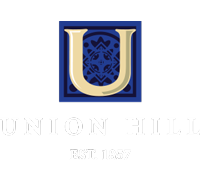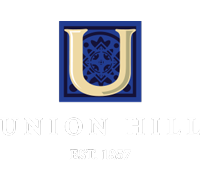Work just began on the final phase, an apartment project called The Founders at Union Hill. When the 181 apartments in five buildings are completed next year, the Union Hill redevelopment plan first approved in 1980 will have spurred well over $200 million in investment in a 16-block area.
“I’m excited about it,” developer Bob Frye said Tuesday. “We’re finishing what we started.”
At the time the Kansas City Council approved the Union Hill redevelopment plan three decades ago, the late-19th-century housing stock of the neighborhood was in bad shape, and Crown Center was concerned the spreading blight would undermine its then-new office, hotel and retail investment.
“It was important for us to protect our southern flank and correct a really blighted neighborhood,” said Bill Lucas, president of Crown Center Redevelopment.
The Kansas City Council approved a redevelopment plan in 1980 that granted 25-year property tax abatement and the power to condemn properties to assist the project. The goal was to revive a neighborhood and make it attractive to what was then a relatively new phenomenon: young urban professionals — yuppies.
It wasn’t easy.
It took three years before its first developer, Jim Young of Union Hill Redevelopment, could begin construction. The redevelopment plan also endured protests by relocated residents who said they were poorly compensated, and then Young had to bow out of the project in 1987 after encountering financial problems.
Phoenix Redevelopment, a new development group led by Frye, took over in 1988. Throughout the project’s history, Crown Center has been a quiet partner, acquiring properties and making sure the development continued at a high standard of quality.
“It’s proven to be a mutually beneficial relationship,” Lucas said. “The development has been very good and accomplished much of what we wanted to achieve, spreading development to the south and cleaning up a rough neighborhood.”
The boundaries of the Union Hill redevelopment area generally stretched from Main Street on the west; Gillham Road on the east; 31st Street on the south; and Crown Center to the north. And, of course, it included the neighboring property that gave the area its name, the historic Union Cemetery.
John Laney, a former city planning director who later went to the Hall Family Foundation as a vice president, said Hallmark and Crown Center needed to make sure the work was done right.
“It was terribly important to Hallmark that residential development take place there,” he said. “It was part of the original Crown Center development, but Hallmark was not in a position to do it.”
Over the years, the project grew beyond building and restoring apartments and homes to include two hotels, the Fairfield Inn and Residence Inn, and a retail project on the southwest corner of 31st Street and Gillham Road that’s part of the so-called Martini Corner district.
The final push along Gillham Road, called The Founders at Union Hill, began in 2005 with seven new apartment buildings and the renovation of the historic Greenlease Cadillac building at 29th and Gillham into condos. That first phase added 256 apartments and condos to the area.
At the same time, another development group built a separate condo and townhouse development called Gillham Row across the street to the east between 29th and 30th streets. That 52-unit project also included the renovation of an old car-battery shop into condos.
Frye said the first phase of The Founders residential project went well, with more than 90 percent of the units rented, many of them to health care professionals and students on nearby Hospital Hill. Other tenants include downtown workers and empty-nesters.
That first phase was completed in 2008, but the recession slowed moving forward with the rest of The Founders project. Excavation on what will be another five, four-story buildings along Gillham and 30th Street began only recently.
Three of the buildings will offer units geared toward what he called “platinum lifestyles.” Rents at the 69 luxury apartments will range from $1,100 for a one-bedroom, to $1,800 for a two-bedroom. Features include hardwood floors, gas stoves and walk-in pantries.
The other two buildings are designed to be loft-style. Rents in those 112 units will range from $750 for a studio, to $1,415 for a two-bedroom. All the units will include outdoor space, either balconies or terraces, and there will be a 300-space underground garage.
As part of the plan, landscaping will be completed along the west side of Gillham from the old Greenlease Cadillac building to 31st Street. The work will include trees, pedestrian lighting and planter beds, all the vegetation irrigated by a 32,000-gallon underground cistern of collected rainwater.
In the 30 years since Union Hill redevelopment began, much has occurred in the surrounding area.
The core of downtown has undergone a substantial revival; the Federal Reserve Bank of Kansas City relocated to a new headquarters at 28th and Main streets; and a dozen historic apartment buildings on nearby Armour Boulevard are being renovated by Mac Properties, a New Jersey developer, into 1,400 new units.
Frye estimated Union Hill alone has added 1,000 new and renovated residences to the area. And recently, the developer of Gillham Row announced he’s moving forward with a 22-unit apartment building at 29th Street and Gillham to complete that development.
“If you add up the housing growth, that’s 2,000 to 3,000 units in a 1-mile circle,” Frye said. “There’s probably not another 1-mile circle in the metropolitan area that’s had that much housing growth over the past five years.”
And more may be in store in the future. Lucas said Crown Center still has ample land that is slated for future residential development.
“Down the road, it will eventually trigger residential (development) in Crown Center on that open acreage there,” he said.





